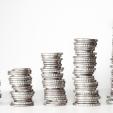Gold Price Shines As Washington Stumbles
London (Aug 25) One of the more unique aspects of this year's market is that both risky assets as well as investments that seek to hedge those risks are advancing simultaneously. Despite last week's sell-off, the S&P 500 is up 8%, the tech-heavy Nasdaq Composite 15% and the MSCI Emerging Markets Index over 22%. Yet oddly, typical "safe-haven" hedges are also doing remarkably well, such as long-dated U.S. Treasuries and gold.
Gold's performance, up 12% year to date, is particularly interesting. A hard-to-define asset, gold is often thought to perform best when either inflation and/or volatility is rising. This year has been notable for both falling inflation and record low volatility, raising the question: What is powering gold's ascent and can it continue? Two trends stand out:
1. Real rates have flattened out
Gold is most correlated with real interest rates (in other words, the interest rate after inflation), not nominal rates or inflation. While real rates rose sharply during the back half of 2016, the trend came to an abrupt halt in early 2017. U.S. 10-year real rates ended July exactly where they began the year, at 0.47%. The plateauing in real yields has taken pressure off of gold, which struggled in the post-election euphoria.
2. Political uncertainty has risen
Although market volatility has remained muted, albeit less so the past week, policy uncertainty has risen post election (see the accompanying chart). This is important. Using the past 20 years of monthly data, policy uncertainty, as measured by the U.S. Economic Policy Uncertainty Index, has had a more statistically significant relationship with gold prices than financial market volatility. In fact, even after accounting for market volatility, policy uncertainty tends to drive gold prices.
SeekingAlpha












